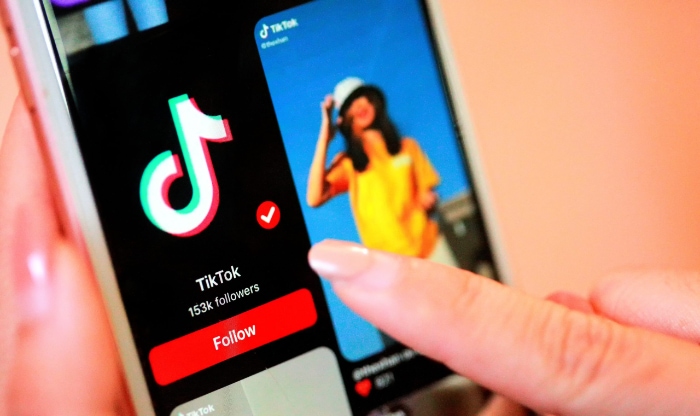Is It Bad To Have Multiple TikTok Accounts? Revealed

TikTok has become a staple in modern social media, captivating millions with its unique short-form video content. As many users explore the platform's vast possibilities, the concept of managing multiple accounts often emerges.
Some view this as a way to categorize their diverse content, while others question its practicality. Through this article, we'll probe deeper into the merits and drawbacks of holding multiple TikTok accounts, drawing insights from popular content creators and expert perspectives.
Reasons for Having Multiple TikTok Accounts
The world of TikTok is vast and varied, offering opportunities for users to share an array of content from personal moments to professional showcases. As such, many creators find that having just one account might not sufficiently cater to their diverse content needs.
Below, we explore the primary reasons why users consider managing multiple TikTok accounts.
Diverse Content Genres
Different facets of a creator's life or interests might demand distinct platforms. For example, a user might want one account for personal memories, casual dances, and challenges, while another might be dedicated solely to their art, business, or specific hobbies.
By having multiple accounts, creators can ensure that their content reaches the intended audience without mixing genres.
Privacy Concerns
In today's digital age, privacy is of paramount importance. Some users opt for multiple accounts to separate their personal life from their public or business persona.
One account might be set to private, allowing only close friends and family to view content, while the other remains public for broader outreach.
Testing New Content
TikTok, like any other platform, has its trends and evolving user preferences. By having a secondary account, users can experiment with new content ideas, formats, or trends without impacting their primary account's follower base or brand image.
This “sandbox” approach allows for creativity without the risk.
Enhanced Engagement
Audience engagement can sometimes be better managed when the content is tailored and specific. By segregating content into different accounts, users can offer their followers a more focused and engaged experience.
For instance, followers who are primarily interested in a user's cooking content might not engage as much with their travel videos. Splitting these can lead to more meaningful interactions on both fronts.
Simplifying the Algorithm
TikTok's algorithm works by understanding user preferences and behavior. By posting varied content on one account, the algorithm might get mixed signals about the target audience.
Multiple accounts allow the algorithm to have a clearer understanding of the content type and audience, potentially leading to better content recommendations and visibility.
As TikTok continues to dominate the social media landscape, users are constantly seeking ways to optimize their presence and reach. Multiple accounts emerge as a viable solution for many, offering flexibility, privacy, and strategic advantages.
Evidence from Popular Content Creators
The TikTok platform is home to a myriad of content creators, each carving out their own niche and style. While most maintain a single account, a significant number have ventured into managing multiple accounts, finding success and growth in doing so.
Let's explore the evidence from these influential figures and their reasons for branching out.
Distinct Personal and Professional Lives
Many renowned creators have established separate accounts to keep their personal content distinct from their professional or business-oriented uploads. This strategy ensures that their audiences receive targeted content, maximizing engagement and satisfaction.
For instance, a fashion influencer might have a separate account for daily vlogs or behind-the-scenes content, ensuring their primary account remains streamlined with fashion-related content.
Experimentation Without Dilution
High-profile creators often feel the pressure to maintain their brand image consistently. By having a secondary or even tertiary account, these creators freely experiment with new content styles, trends, or ideas without the risk of diluting their main brand or confusing their primary audience.
Niche Audience Targeting
Some of the most successful TikTokers have identified niche audiences that resonate with specific content types. By creating multiple accounts, they can tailor their content to these niches, ensuring dedicated followers receive exactly the content they signed up for.
An example might be a fitness enthusiast who also loves baking, having separate accounts ensures that followers interested in workouts aren't inundated with cake recipes and vice versa.
Backup and Contingency
In a digital era where account bans or suspensions can occur unexpectedly, several prominent creators maintain secondary accounts as a contingency. This way, they have a backup platform to communicate with their followers or transition to in case of unforeseen complications with their primary account.
Collaborative Projects
Collaborations are a cornerstone of social media growth. Some creators set up joint accounts with other influencers to host collaborative content.
These shared accounts cater to combined audience bases, offering fresh content that showcases the synergy between the collaborating creators.
Through the strategies of these influential TikTokers, it's evident that having multiple accounts isn't just a whimsical choice. It's often a calculated move, driven by the desire for strategic growth, audience segmentation, and content diversification.
Potential Downsides of Having Multiple TikTok Accounts

While the allure of managing multiple TikTok accounts offers numerous advantages, it's not without its challenges. Many users, after diving into the world of multi-account management, face unforeseen complications and dilemmas.
Here, we'll unpack some of the potential pitfalls and considerations associated with juggling more than one TikTok account.
Management Challenges
Operating multiple accounts demands significant time and energy. From crafting content to engaging with followers on each account, creators can quickly find themselves overwhelmed.
This strain can lead to inconsistent posting, reduced content quality, or even burnout.
Audience Overlap and Confusion
With more than one account, there's a chance of audience overlap, where the same followers are present on multiple accounts. This can sometimes confuse followers, especially if similar content is posted across accounts.
Over time, this can diminish the uniqueness of each account and potentially lead to reduced engagement.
Diluted Engagement
By splitting content across accounts, creators risk diluting their audience engagement. Instead of having a consolidated follower base on a single account, the engagement metrics might show a scattered pattern, making it challenging to identify which content truly resonates.
Risk of Policy Violations
While TikTok currently allows users to have multiple accounts, platform policies can change. If not careful, users might inadvertently violate terms of service, especially if they aren't up-to-date with the platform's evolving guidelines.
Algorithmic Limitations
TikTok's recommendation algorithm is designed to promote content to users based on their interactions and preferences. With multiple accounts, there's a chance the algorithm might not accurately gauge the content's target audience, especially if there's inconsistency in posting or content type.
Increased Exposure to Negativity
Operating in the digital space invariably exposes creators to both positive and negative feedback. With multiple accounts, this exposure is magnified.
Managing negative comments, trolling, or any adverse interactions becomes more demanding with more than one account.
While the idea of having multiple TikTok accounts is tempting for many, it's essential to weigh these potential downsides against the benefits. A strategic approach, backed by clear objectives, can help in mitigating some of these challenges.
Benefits of Having a Single TikTok Account
The vast universe of TikTok offers a canvas for creators to showcase their talents, ideas, and personalities. While some opt for multiple accounts to cater to various interests, many choose the simplicity and focus of a single account.
Let's explore the advantages that come with maintaining just one TikTok account.
Streamlined Management
With only one account to oversee, creators can concentrate their efforts on crafting top-notch content. This focus often leads to consistent posting schedules, allowing followers to anticipate and engage with new uploads regularly.
Consolidated Audience Base
A single account ensures that all followers are in one place, leading to a centralized and robust community. This unified follower base can boost engagement metrics, making it easier for creators to understand and cater to their audience's preferences.
Clear Brand Identity
Having one account offers a clear and distinct voice and style. Followers can quickly identify and resonate with the brand, leading to stronger loyalty and connection. This clarity often results in better audience retention and growth.
Simplified Algorithm Interaction
A single account can give the TikTok algorithm a clearer picture of content preferences and audience behavior. This clarity can result in more accurate content recommendations, potentially boosting the account's visibility and discoverability on the platform.
Reduced Risk of Overexposure
Operating one account minimizes the chances of overexposing oneself to the digital world's potential negatives. It becomes easier to manage and control interactions, comments, and overall digital well-being.
Ease of Monetization and Partnerships
For creators aiming to monetize their content or enter partnerships, a single account can offer a more straightforward path. Brands and sponsors typically prefer clarity in audience demographics and engagement metrics, which is more readily available with one account.
Opting for a single TikTok account embodies the essence of simplicity and focus. While it may not offer the diversified approach of multiple accounts, it brings forth a slew of benefits that can be immensely rewarding for many creators.
Conclusion
TikTok's dynamic platform provides creators with myriad ways to present their content and engage with audiences. Whether one opts for multiple accounts to diversify and target specific niches or a singular account for streamlined focus, each approach has unique advantages and challenges.
Popular content creators have showcased varied strategies, reflecting the vast possibilities available. Ultimately, the decision rests on individual goals, capacity for management, and the desired brand image.
Both pathways offer opportunities for growth, connection, and success in the ever-evolving realm of TikTok.


